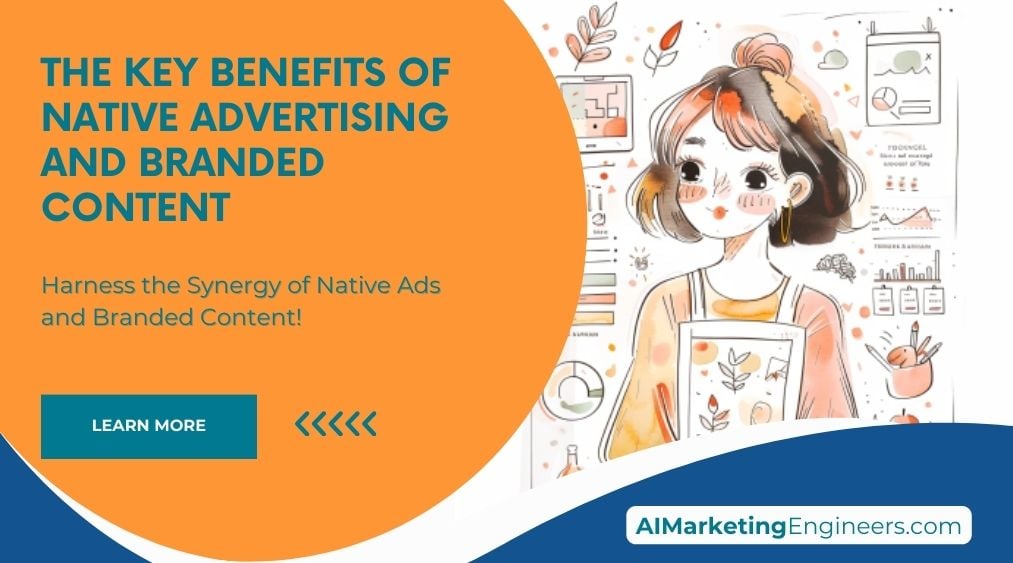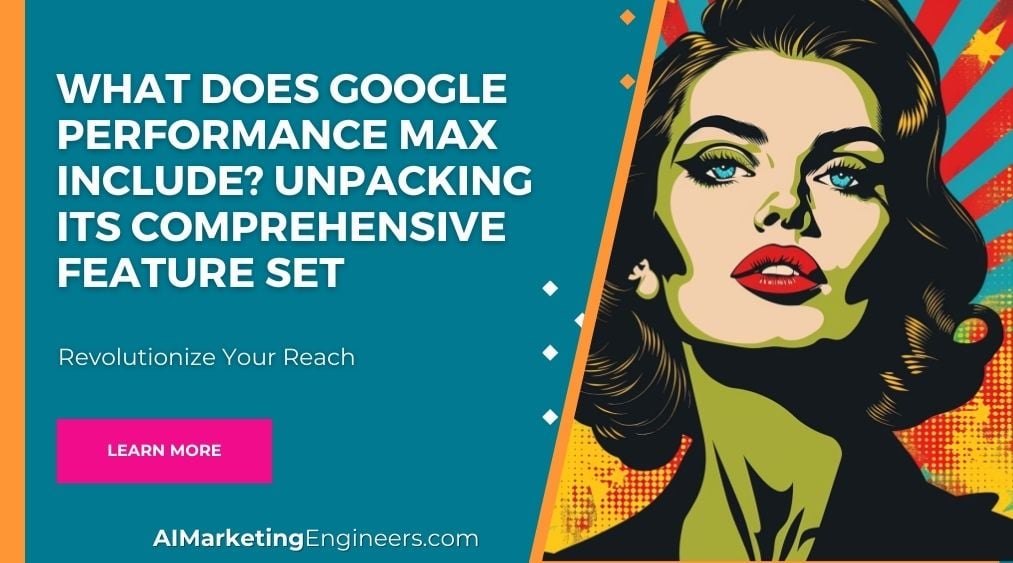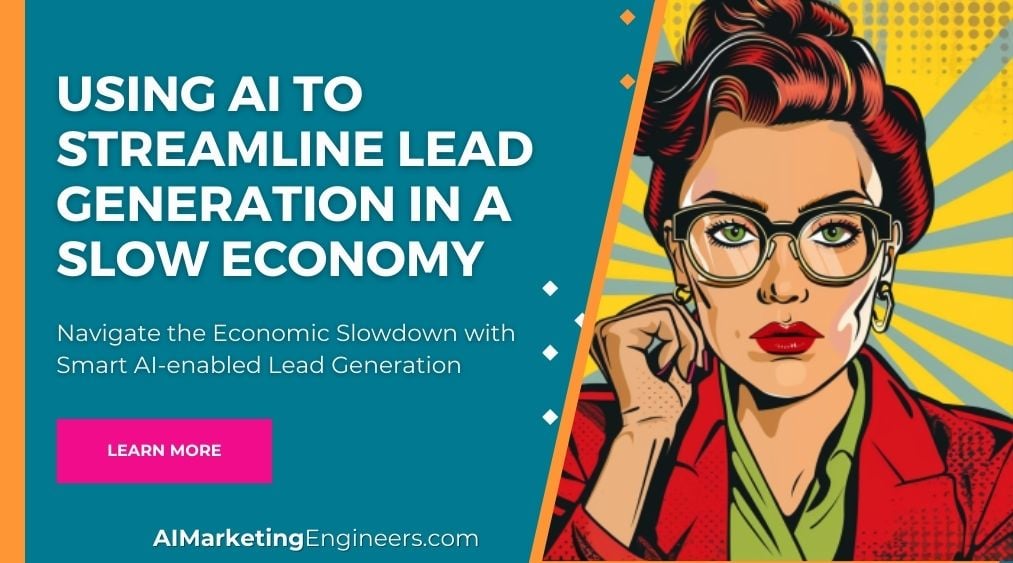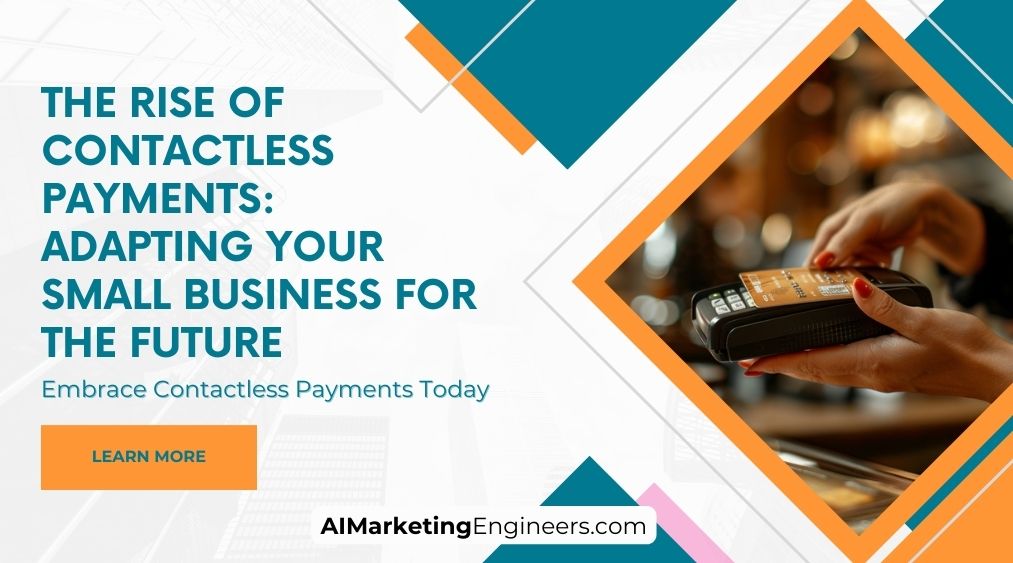Key Takeaways
✅ Increased Engagement and Relevance: Studies show that native ads can improve click-through rates by up to 300%. By blending with the platform's content, they capture the audience's attention more effectively than traditional ads.
✅ Enhanced Brand Awareness and Credibility: Content marketing gets three times more leads than paid search advertising. Through informative and engaging branded content, a business can position itself as an industry leader.
✅ Improved Return on Investment (ROI): Branded content has 22 times more engagement than display ads. This cost-effective strategy not only fits the budget better but also translates engagement into tangible sales.
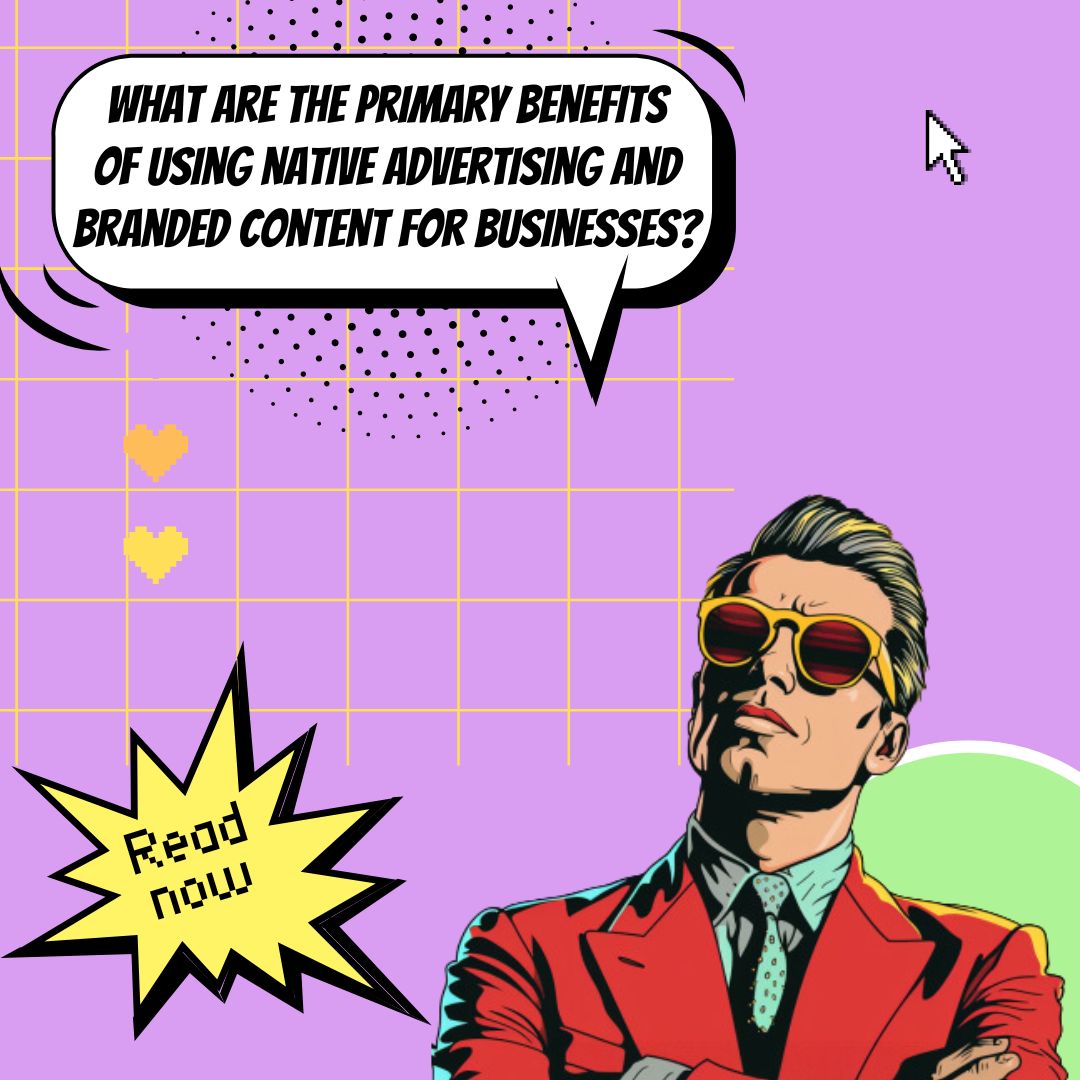
Introduction
Imagine this: every piece of content you put out there fits so neatly into your audience's daily scroll that they don't even see it as an advertisement. That's the beauty of native advertising and branded content. These are not just buzzwords; they are game-changers in today's marketing playbook. This guide isn't just an exploration of what these strategies are; it's a hands-on manual on how they can revolutionize your engagement and ROI.
The digital world can be a tricky playing field, with consumers' attention spans waning and their desire for authenticity growing. So, how can native advertising and branded content bridge this gap? And more importantly, what can it do for your bottom line? Prepare for an exploration of contemporary practices and strategies that might very well be your ticket to not just staying afloat, but truly making waves in the digital ocean.
Stick around, because we're about to dive deep into the actionable insights and groundbreaking information that will elevate your brand's presence and profitability.
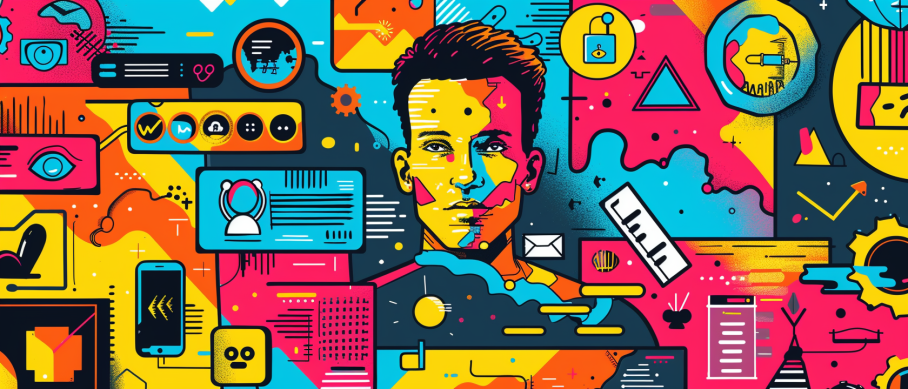
Top Statistics
| Statistic | Insight |
|---|---|
| Projected Native Advertising Spend: Expected to reach $402 billion by 2025, with a CAGR of 11.4%. (Source: Business Wire, 2021) | This massive spend reflects confidence in the effectiveness of native advertising as an integral component of digital strategy. |
| Native vs. Traditional Display Ads: Native ads receive 53% more views than traditional ads. (Source: Sharethrough, 2019) | The significant viewership can translate into better engagement rates and higher ROI for brands. |
| Impact on Consumer Behaviour: Native ads result in a 9% higher brand affinity and 18% higher purchase intent compared to banner ads. (Source: IAB, 2019) | Indicates that native advertising is more than just visibility—it deeply influences customer sentiment and decision-making. |
| Future of Digital Display Ads: By 2025, 74% of all digital display ad spending will be for native ads. (Source: eMarketer, 2021) | Signals a shift in business priorities, with a hefty majority of ad budgets pivoting to adapt to consumer preferences for native formats. |
| Growth of Native Video Ads: Market size projected to grow from $19.4 billion in 2021 to $36.3 billion in 2024. (Source: eMarketer, 2021) | Reflects the booming consumer appetite for video content, presenting a lucrative frontier for marketers and brands. |
Understanding Native Advertising and Branded Content
When you're scrolling through your favorite news site or social media feed, have you ever stumbled upon an article or video that seems just like any other content, but it's actually promoting a product or service? That's native advertising in action. Native advertising is a type of paid media where the ad experience follows the natural form and function of the user experience in which it's placed. On the flip side, branded content is content produced by a brand to stimulate interest in its products without explicit advertising. While they have their differences, both are designed to blend in with their environment and provide value to the viewer.

Key Benefits of Native Budgeting
Let’s break down why native advertising might just be a marketer’s ace in the hole. For one, it's about getting people to actually look at your ads. Traditional banner ads? Please, those have been fading into the background for years. But a recent report showed that native ads register an 18% higher lift in purchase intent than traditional display ads. Why does it work better? Well, it's because these ads don’t scream “I'm an advertisement!” Instead, they match the look and feel of the content that surrounds them, hence, enhancing engagement. And let’s talk about user-friendly experiences. People don't like being interrupted, and native ads are like that polite guest at a party, blending in smoothly and making a good impression, leading to an improved user experience. Moreover, by associating with content that readers are already into, brands can cement their name in consumers’ minds, creating increased brand recognition.
Advantages of Brained Content
Now, onto the warm and fuzzy stuff – branded content. This is like storytelling on steroids. It's not just about selling a product; it's about crafting a narrative that resonates with your audience. Just look at Red Bull, which has practically become synonymous with extreme sports – their content entertains, informs, and connects with people on an emotional level. This approach not only draws in viewers but also builds a level of trust and credibility that traditional ads can rarely achieve. And before you think it's all about feel-good stuff, know this – content that hits the right notes can be powerful in driving action. Case studies have shown branded content campaigns achieving conversion rates 3-5 times higher than traditional marketing methods.

Best Practices for Native Adoption and Brained Content
There’s no magic spell for successful native advertising and branded content, but certain strategies can up your game. The first is knowing your audience inside and out – that’s targeting and personalization. There’s no one-size-fits-all here; tailor your content to speak directly to your ideal customer’s interests and needs. And the packaging? It's just as crucial as the message. Whether it's visually striking or ingeniously interactive, creative design and format are your tickets to captivating audiences. Now, once you've rolled out your ad or content piece, the job's not over. Keeping an eye on how it performs is key – we're talking measurement and optimization. Learn what worked, what didn’t, and tweak your approach accordingly. This isn’t a "set it and forget it" type deal; it's an iterative process.
Additional Resources
To get the gears turning and dive deeper into native advertising and branded content, consider checking out the Native Advertising Institute or the Content Marketing Institute. They are treasure troves of actionable insights, from industry reports to real-world case studies. Read up on think pieces from marketing mavens at Adweek or Forbes for those hot takes and best practices. And don’t forget, platforms like BuzzSumo can help you understand what content's trending, giving you an edge in crafting your own compelling narratives.
AI Marketing Engineers Recommendation
Recommendation 1: Integrate Native Advertising Within Your Content Marketing Strategy: Leveraging the effectiveness of native advertising often means a symbiotic relationship with your content marketing initiatives. With consumers being 25% more likely to look at a native ad than a banner and native ads creating an 18% increase in purchase intent compared to traditional ads, according to Sharethrough, it’s essential to integrate native advertising effectively within platforms frequented by your target audience. For instance, if your audience spends a significant amount of time on a particular social media platform, invest in native ads on that platform that match the look and feel of the regular content, thus increasing engagement.

Recommendation 2: Focus on Authentic Storytelling in Branded Content: Current trends show that branded content with authentic storytelling tends to resonate more with audiences, fostering trust and connection. A study by Time Inc. found that two-thirds of consumers trust branded content more than traditional advertising. Implement storytelling strategically by tailoring narratives that reflect your brand values and resonate with the audience's specific interests and pain points. Craft these stories to not only sell but also to deliver value in the form of entertainment, information, or emotional connection.
Recommendation 3: Utilize Data-Driven Personalization in Native Advertising and Branded Content: Personalization is key in making content feel tailored and relevant to your audience. Use data analytics tools to glean insights into consumer behavior and preferences, then tailor your native ads and branded content to align with those insights. Tools like Google Analytics and Adobe Analytics can provide a wealth of information about how users interact with your content. Customizing content based on this data can lead to higher engagement rates, with personalized call-to-actions (CTAs) increasing sales opportunities by 20%, as per a study by Epsilon. The relevance provided by personalization enhances the user experience and subtly increases the efficacy of your native and branded content.
Relevant Links
- Conquer Chinese Digital Marketing with WeChat – Your Complete Guide!
- Dominate Google.de – SEO Secrets for Success in Germany Revealed!
- WeChat & Baidu SEO Integration – Tap into China’s Full Potential!
- Craft Engaging Content for German Audiences – Discover the Power of Localization!
- Korean E-Commerce Trends 2024 – Get Ahead of the Game!
Conclusion
As we wrap up this comprehensive guide, it’s clear that the synergy between native advertising and branded content is reshaping the marketing landscape. Native ads, with their chameleon-like ability to fit seamlessly into their surroundings, offer enhanced engagement, not to mention an improved user experience that respects the audience's time and attention. The data doesn't lie – companies leveraging native advertising are seeing a significant uptick in brand recognition. And what about branded content? It's the storytelling powerhouse that builds deep connections by offering value, trust, and credibility, often leading to a direct impact on conversions and sales.
Yet, knowing the benefits isn't enough. The art lies in mastering the best practices for these strategies, from pinpointing your target audience to honing the creative design, and rigorously measuring performance to constantly refine your approach. By embracing the powerful duo of native ads and branded content, brands are not just selling – they are engaging in meaningful conversations with their audiences.
Are you ready to unleash the potential of these dynamic marketing tools? Take a leap and reimagine your engagement strategies. Invite your audience into a narrative that resonates, fosters trust, and gently guides them to a decision with authenticity and integrity. Your brand isn't just another name in the market – with native advertising and branded content, it can become a beloved part of your customers' daily lives. Where will your story take them?
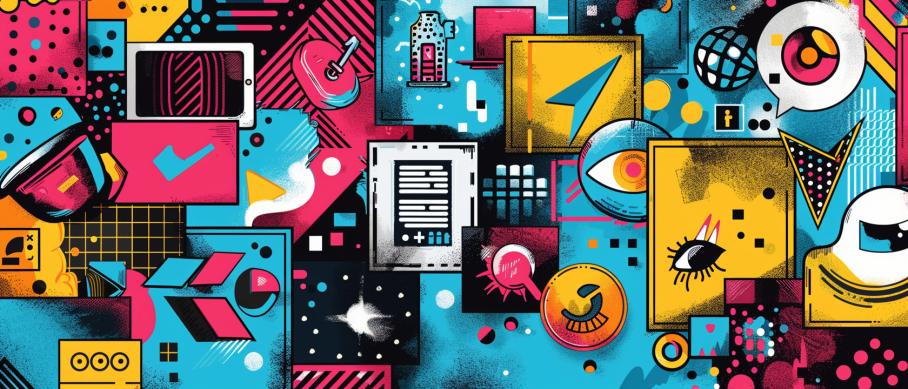
FAQs
Question 1: What's this thing called native advertising?
Answer: Oh, native advertising is pretty much like a chameleon. It's paid content that snaps right in, looking and feeling just like the other stuff on the platform you're on. It's sneaky in a good way—there to engage you without sticking out like a sore thumb.
Question 2: And branded content is… what, exactly?
Answer: Think of branded take as a storyteller weaving tales that also give a nod to a brand. It's content that's meant to be useful or entertaining but also dips its hat to the company that sponsored or created it. It's like getting a recipe from a food brand - yum and useful!
Question 3: What's so great about native ads and branded content?
Answer: Oh, there's a treasure trove of goodies here! More people stop and look, brands get a glow-up in recognition, they earn a shiny badge of credibility, hit the bullseye with their audience, and yes—more ka-chings with higher conversion rates.
Question 4: How are native ads different from the standard ads we see?
Answer: It's like the difference between a smooth jazz tune and a blaring car alarm. Native ads don't jump at you; they're part of the flow of what you're already enjoying. Traditional ads? Well, they tend to interrupt and ask for your attention rather abruptly.
Question 5: Can you tell if native ads and branded content really work?
Answer: You bet! Just peek at things like how many people are engaging, clicking, or taking the action you want them to. Plus, you can do brand lift studies to see how your brand's rep has improved.
Question 6: What's the scoop on making killer native ads and branded content?
Answer: Get this—quality and relevance are king and queen. Make the content worth the audience's time, slap on a "sponsored" label so no one feels duped, and create stuff that'll get people talking and sharing.
Question 7: How do you keep it real and not trick people with your content?
Answer: Transparency is the game. Wave that "sponsored" flag high and proud, and deliver value—don't just talk the talk. Matching the platform's vibe and your audience's wants is your golden ticket.
Question 8: Got any tips on what NOT to do when making this kind of content?
Answer: Yeah, steer clear of content that's as appetizing as a stale cracker, forgetting to be upfront about it being sponsored, and pushing your brand so hard that it's all sell and no show.
Question 9: So, how do you go big with this native ad and branded content thing?
Answer: Teaming up with pros, like a content marketing agency, can help pump up the volume. And create content that lasts—stuff that you can dress up and take out again and again for different platforms.
Question 10: What are some slam-dunk examples of native ads and branded content?
Answer: Remember when Red Bull launched someone into space? That’s native advertising rocket fuel. Or BuzzFeed's yummy "Tasty" videos? And how about Airbnb's wild sleepover experiences? Those hit the sweet spot between great content and branding magic.

Academic References
- Moe, S., Colicev, Y. V., & Theodosiou, D. (2016). The Effectiveness of Native Advertising: A Critical Analysis and Research Agenda. Journal of Interactive Marketing, 36, 12-32. This article offers a comprehensive analysis of native advertising, emphasizing its role in enhancing brand recognition and consumer engagement, while calling for more research to navigate both challenges and opportunities within the field.
- Lee, J., Lee, J., & Kim, J. (2017). The Impact of Native Advertising on Consumer Trust and Purchase Intent. Journal of Advertising, 46(1), 97-111. This research provides evidence on the positive effects of native advertising on consumer trust and purchase behavior, noting variations based on the distinctive features and content of ads.
- Lee, J., & Kim, J. (2018). Branded Content and Native Advertising: A Review and Research Agenda. International Journal of Advertising, 37(2), 289-312. Exploring the terrain of branded content and native advertising, this review clarifies concepts and applications, and suggests a path for future investigations to unravel their efficacy.
- Moe, S., & Theodosiou, D. (2018). The Effect of Native Advertising on Consumer Attitudes: The Role of Advertising Literacy and Advertising Disclosure. Journal of Business Research, 85, 1-9. The study delves into how native advertising sways consumer attitudes and underscores the importance of advertising literacy and proper disclosures in boosting effectiveness.
- Lee, J., Lee, J., & Kim, J. (2019). The Impact of Native Advertising on Consumer Behavior: A Systematic Literature Review and Future Research Agenda. Journal of Interactive Advertising, 19(3), 198-213. By systematically reviewing the literature, this article evaluates native advertising's influence on consumer actions and suggests directions for future research to enhance understanding.
